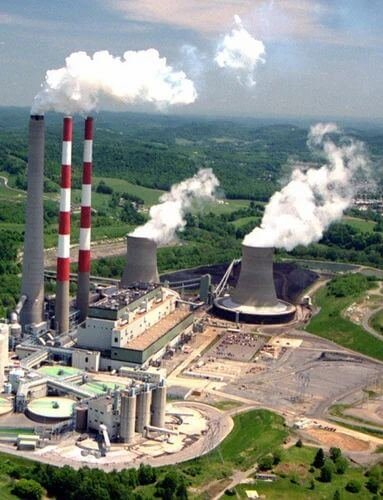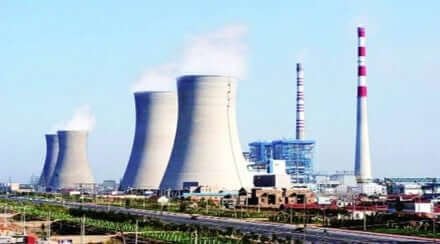Rehabilitation of power plant structures is technically necessary to ensure safety, efficiency, and uninterrupted operations. Over time, cooling towers, chimneys, silos, and RCC tanks are subjected to thermal stress, chemical exposure, and environmental deterioration, leading to cracks, corrosion, and loss of strength. Gubbi Civil Engineers- specialised in cooling tower repairs, chimney rehabilitation and industrial structure strengthening and uses advanced repair and retrofitting solutions – including concrete rehabilitation, protective coatings, CFRP strengthening, and corrosion mitigation—that restore power plant structures, infra projects and maintain structural integrity and extend service life and sustainable energy generation.
Why Rehabilitation is Essential for Power Plants
Rehabilitation of power plant structures, chimney rehabilitation and cooling tower repairs are mandatory due to aggressive conditions, such as vibrations, chemical attacks, and heat cycles, that are present in ageing power plant structures. These circumstances hasten the deterioration of cooling towers, chimneys, and turbine foundations. Minor problems can develop into expensive failures or shutdowns if they are not resolved right away. Frequent repair guarantees adherence to safety standards and avoids unplanned downtime. Investments are protected, and sustainable energy generation is supported for expanding industrial needs through proactive repair and strengthening actions.

Key Challenges in Power Plant Structures
Concrete chimneys are susceptible to corrosion and cracking due to moisture and acid gases. Since the cooling towers are constantly exposed to chemicals and moisture, they develop scaling, water seepage, and material deterioration. Auxiliary buildings and boiler foundations are subject to vibration-related strains. Gubbi’s efficient planning for cooling tower repair, chimney rehabilitation, and industrial structure strengthening for long-term safety requires early strategic identification of these issues, like with Drone surveys.
Role of Non-Destructive Testing in Assessment
A precise structural health diagnostic is necessary before the start of rehabilitation. Engineers can evaluate hidden deterioration without causing harm by employing non-destructive testing (NDT) techniques. Cracks, voids, and corrosion activity are detected using methods such as half-cell potential mapping, ground-penetrating radar, and ultrasonic pulse velocity. For the purpose of creating focused repair solutions, NDT offers a data-driven basis. Experts make sure rehabilitation efforts are accurate, economical, and in line with the real structural status of power plant assets by combining these tests.
Advanced Repair Solutions for Power Plant Structures
Gubbi- addresses the causes of deterioration and the use of modern repair options, like Drone survey. To improve flexural and shear strength, techniques include wrapping cooling tower shells, chimneys, and beams with carbon fibre. Sprayed Polymer mortar or Micro-concrete jacketing repairs severely deteriorated foundations and columns. Systems for cathodic protection shield reinforcement from corrosion brought on by chloride. These cutting-edge technologies guarantee dependable operation of vital power plant structures under harsh operating conditions, greatly extend service life, and decrease maintenance frequency.
Cooling Tower Repair Strategies
Although cooling towers are essential for controlling temperature, they are frequently vulnerable to leaks, chemical attacks, and concrete deterioration. Gubbi undertakes – Crack injection, various waterproofing techniques and protective coatings application to withstand chemical exposure for efficient cooling tower maintenance. FRP strengthening and jacketing solutions improve durability for structural damage. Fan decks, water channels, and drift eliminators are also covered in repair plans.
Chimney Rehabilitation Approaches
Thermal power plant chimneys are subjected to extreme heat and chemical stress. Acid-resistant linings, protective coatings, and grouting to fix cracks are all part of chimney rehabilitation. To restore structural stability, steel jacketing and carbon fibre wrapping are used. Cathodic protection systems are used for reinforced concrete chimneys in order to prevent embedded steel from corroding. Rehabilitation protects worker health and plant safety by preventing dangerous structural failures and guaranteeing environmental compliance.
Industrial Structure Strengthening Methods
Many power plants need to improve their current buildings in order to withstand increasing loads as energy demand rises. Facilities can satisfy these needs thanks to industrial structure strengthening techniques, including carbon fibre wrapping, external post-tensioning, and steel plating. For degraded foundations and columns, micro-concrete jacketing offers further strength. By ensuring that structures can endure seismic forces, vibration loads, and thermal expansion, these strengthening techniques enable factories to function safely under contemporary industrial needs without the need for expensive restoration.
Importance of Preventive Maintenance
Significant results are obtained from rehabilitation initiatives, but preventive maintenance is necessary for long-term efficacy. Important procedures include applying protective coatings, scheduling inspections, and keeping an eye on the structural integrity. Early identification of concealed problems is ensured by incorporating non-destructive testing into regular evaluations. Preventive maintenance optimises return on investment, minimises life-cycle costs, and lowers operating hazards. Power plant owners can extend service life with fewer interruptions by combining rehabilitation with continuous maintenance.
Sustainability Through Advanced Repair Solutions
In the management of industrial infrastructure, sustainability is becoming more and more significant. The rehabilitation of power plant structures minimises resource use by avoiding complete replacement. Micro-concrete jacketing and carbon fibre wrapping are two methods that improve performance while using less material. Additionally, carbon emissions from new buildings are reduced by sustainable maintenance. Facilities can improve durability and meet environmental goals by implementing corrosion inhibitors and eco-friendly coatings, which guarantee long-term operational effectiveness and regulatory compliance.
Why Choose Gubbi Civil Engineers Limited®?
Gubbi Civil Engineers Limited® is a specialised service provider for the rehabilitation of power plant structures. Using state-of-the-art technologies, the company specialises in industrial structural strengthening, chimney rehabilitation, and cooling tower repairs. The team of professionals uses cutting-edge restoration techniques like carbon fibre wrapping, micro-concrete jacketing, S-sprayed polymer mortar, protective coating and cathodic protection systems in addition to non-destructive testing for precise evaluation. Extended asset life, safety compliance, and dependable service are all advantageous to clients.
In order to guarantee long-term safety, operational continuity, and sustainability, power plant buildings must be restored. Cutting-edge techniques, including industrial structure strengthening, chimney rehabilitation and cooling tower repair, offer long-lasting answers to the problems associated with ageing infrastructure. Plants can lower costs and increase service life with non-destructive testing and cutting-edge repair technology. Power plant owners can be sure they will receive efficient, tailored solutions that keep their assets secure, robust, and prepared for the future by collaborating with professionals like Gubbi Civil Engineers Limited®.

